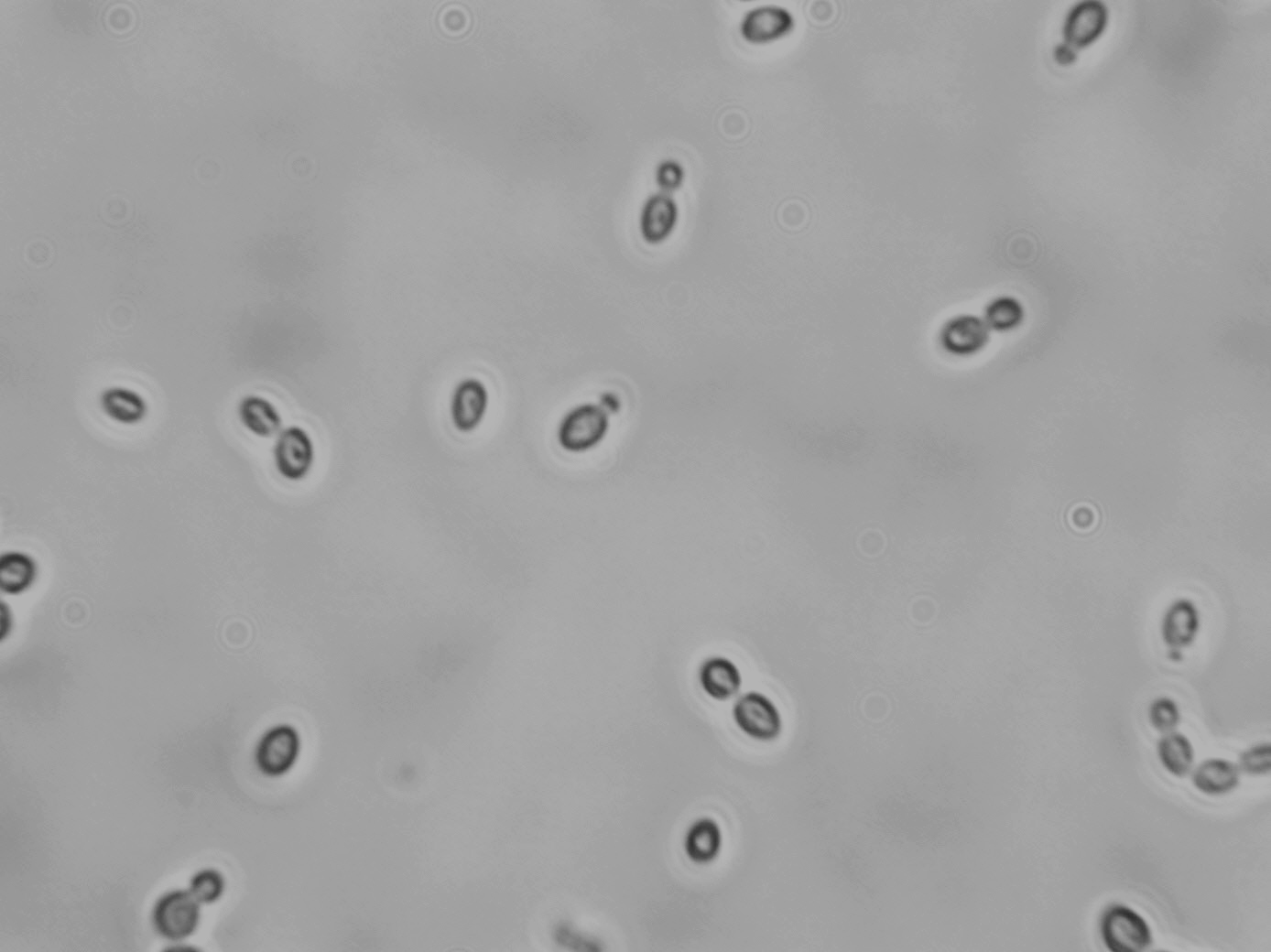Genus/species (aliases): Candida stellata (Saccharomyces stellatus; Torulopsis stellata; Cryptococcus stellatus; Cryptococcus bacillaris; Saccharomyces bacillaris; Troulopsis bacillaris; Brettanomyces italicus)
Classification: Ascomycete; anamorph
Morphology:
Cell: budding; spherical to ovoid, usually found as single cells but may be arranged in a star-like configuration of cells; no hyphae or pseudohyphae are formed.
Colony:
- YPD: grayish-white to brownish, glossy soft and smooth
- Malt agar: large, round cream or white colonies
- WL: will grow slowly
- Spore: NA
- Zygote: NA
- Ascus: NA
Liquid Growth: whitish film that can appear cheese-like
 |
 |
 |
 |
Physiological Traits:
- Fermentation: Glucose; Sucrose; Raffinose (may be slow)
- Assimilation: Sucrose; Raffinose; no assimilation of nitrate; no growth in vitamin-free medium: requires biotin, pantothenate, inositol, thiamin; uses Lysine as sole N source
- Growth: 37 C: variable; able to grow at lower temperatures and higher pHs.
- Growth sensitivities: generally sensitive to cycloheximide
- Notes: Fructose is the preferred sugar of C. stellata, but it can use other sugars as substrates for growth. The yeast produces large amounts of glycerol and succinic acid as end products of its metabolism. It can die off in media likely due to acid production
Ecological Traits:
C. stellata is found on grape surfaces in vineyards and tend to be more dominant during the ripening of the fruit. They increase in number as the berry ripens due to the damage that occurs with ripening, such as leakage of sugars, that serve as nutrients for the yeast.
Role in wine:
Candida stellata is a member of the natural grape and fermentation flora. Typically, they are found in highest numbers closer to the start of fermentation and as the fermentation progresses, C. stellata decrease in number giving way to Saccharomyces species. However, C. stellata and other Candida species have been found present much later in the fermentation process than other wild or native yeast and have been shown to completely ferment a wine. C. stellata can appear as a white, cheese-like scum on wine surfaces, however their effect is merely one of appearance as they do not seem to create substantial negative sensory or stability problems. In fact, some studies have found that C. stellata can enhance the sensory profile of wines with characteristics such as honey, apricot and sauerkraut. In addition to being more prevalent early in the fermentation, C. stellata, can also be found flourishing in wines fermenting at low temperatures. The population of the yeast increases in cold soak wines and wines at low temperatures for solid settling.
Sensitivities:
- SO2: somewhat sensitive
- Sorbate: somewhat sensitive
- DMDC: sensitive
- pH: sensitive to low pH
- Acids: sensitive
- Ethanol: not sensitive
- Anaerobiosis: not sensitive
- Heat: sensitive
